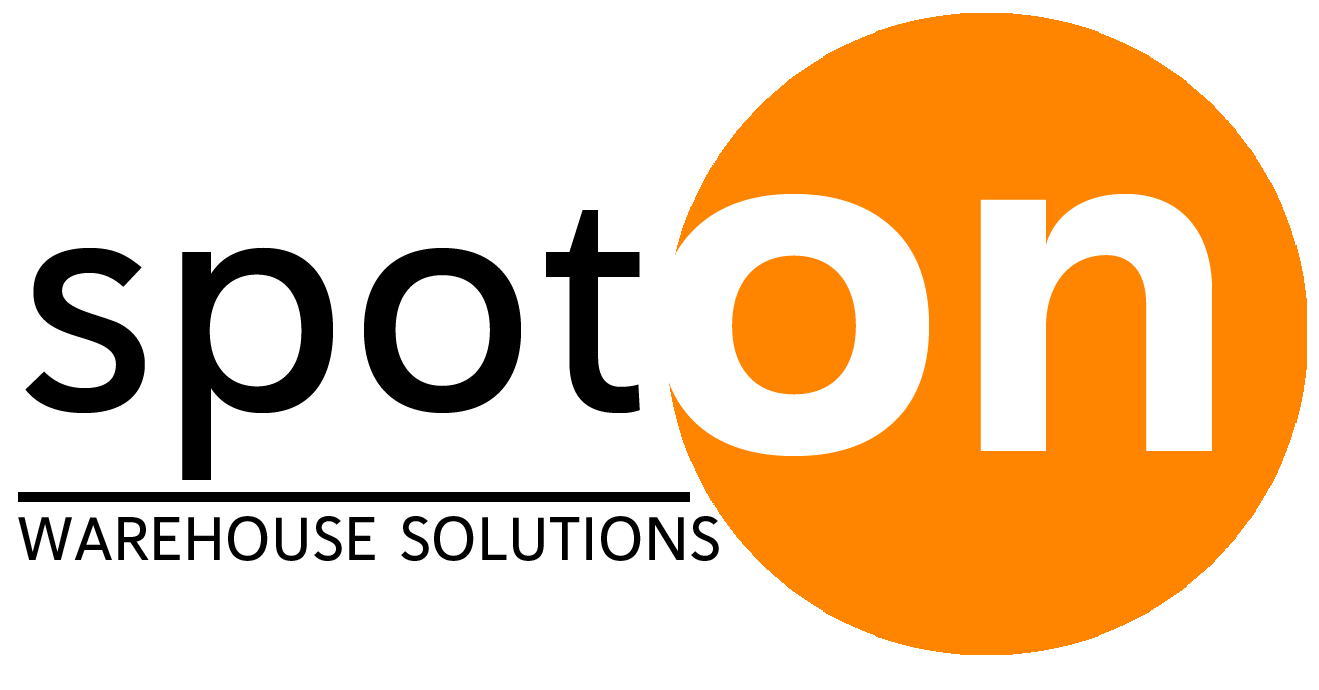What Is Selective Pallet Racking?
When you hear the term pallet racking, chances are you're thinking of selective pallet racking. It’s the most common type used in warehouses worldwide. It's a single-selective, first-in, first-out (FIFO) system that’s known for being simple, accessible, and flexible.
The system is made up of upright frames and horizontal beams, allowing forklifts to easily place and retrieve pallets at different levels. The adjustable beams mean shelf heights can be changed to suit different pallet sizes or load heights. It's a go-to choice for operations with mixed inventory and high turnover.
Unlike high-density systems like drive-in or push-back racking - where pallets are stored behind each other - selective racking stores only one pallet deep. It does require aisle space, but you get faster picks and direct access to every item, which makes a big difference when you’re managing a wide SKU range.
How Does Selective Racking Systems Work?
Selective pallet racking systems works by scaling vertically, maximising the use of your warehouse’s height rather than just floor space. When properly designed, a selective rack system can increase storage capacity by five to ten times, depending on your ceiling height and layout. Selective racking systems can reach heights of up to around 13 metres, which is about the maximum height before specialised crane or shuttle systems are required.
This racking system uses forklifts or reach trucks to access pallets - typically in wide or standard aisle configurations. The racking is arranged in long rows separated by aisles, creating clear access lanes that run down the length of the warehouse.
You’re not just limited to storing pallets either. Selective racking can also accommodate crates, cartons, and boxes, depending on the beam and shelf configurations. So while selective racking may look like simple shelving, it's highly engineered for accessibility, flexibility, and vertical expansion - ideal for fast-moving warehouses that need both high density and easy access to inventory.

is selective racking the right choice for you?
What Industries Typically Use Selective Pallet Racking
Almost every industry uses selective pallet racking. Even operations with specialised systems usually have some selective racking on-site because of its flexibility and reliability.
Common Industries That Use Selective Racking:
• Third-party logistics (3PL) providers
• Retail and e-commerce fulfillment centers
• Manufacturing and assembly plants
• Automotive and machinery storage
• Food and beverage distribution
• Small factories and workshops
We deem selective racking to be an all-rounder, that’s a safe, adaptable choice that suits most warehouse environments.
Advantages of Selective Pallet Racking
FIFO - First In, First Out
The biggest advantage of selective pallet racking is its flexibility. You can access any SKU quickly, which makes it ideal for warehouses that carry a wide range of products.
Lower Cost
Compared to other high-density racking systems, selective pallet racking is generally cheaper to install.
Improved Safety
Since pallets are stored in single rows, forklift drivers have better line of sight and are less likely to strike uprights.
Adaptability
Selective pallet racking can be tailored to suit virtually any layout - even warehouses with a smaller footprint or facilities with lower ceiling heights.
Why Choose Us for Selective Pallet Racking Installations or Repairs?



Competitive Pricing
By working with a diverse range of suppliers, we’re able to offer more competitive pricing by quoting across brands. This gives our customers greater value and flexibility.


Smart Integration
Need to expand your racking system? We can source components that work seamlessly with what you already have - regardless of current supplier arrangements.


Full-Service Support
Whether it's a new installation or an on-site repair, we manage the entire process seamlessly to minimise disruption to your operations. Contact our team today to schedule a complimentary site visit and explore how we can enhance your racking setup.

transform your pallet racking
Contact Us for a Free Quote Today!
Whether you're repairing, upgrading, or installing selective pallet racking for the first time, our experienced team is here to guide you every step of the way. Get in touch today to unlock the full potential of your warehouse space.
Our Process : Step-by-Step Support From Enquiry to Installation
From start to finish, we deliver a turnkey racking solution that integrates smoothly into your operations. We can coordinate any engineering certifications or building permits if required, and once installed, your racking is ready to use immediately.
Site Visit & Consultation
After you enquire, we’ll come out to your site (or consult remotely if needed) to discuss your space, your storage needs, and what you’re hoping to achieve. We offer honest advice and start shaping solutions based on your real-world operation.
Site Measure & Consultation
Next, we take detailed measurements and assess your floor plan. From there, we’ll sketch out a layout that makes the best use of your space and aligns with your workflow.
Design & Product Matching
We’ll talk you through racking designs and options - whether you’re expanding an existing system or starting fresh - and match components to fit both your needs and budget.
Quoting & Scheduling
You’ll receive a clear, competitive quote along with realistic lead times. Once approved, we’ll schedule installation to suit your timeline.
Installation to Spec
Our experienced team installs the racking system according to your specifications. All of our installs are done safely, efficiently, and with minimal disruption to your operations.
Frequently Asked Questions
Check out our FAQs for additional information regarding selective racking installations or repairs. Feel free to reach out for more information.
What’s the difference between selective and double-deep racking?
At a glance, selective racking and double deep racking can look pretty similar - especially when selective racks are placed back-to-back. But the way they function is quite different.
Selective racking is designed to be accessed from either side, making it ideal when you need fast access to a range of SKUs. It works with standard forklifts and doesn’t require any special equipment.
Double deep racking, on the other hand, stores two pallets deep and can only be accessed from one side. It needs a specific type of reach forklift that can extend far enough to pick up the second pallet. That forklift also requires a bottom beam in the racking so its wheels can roll underneath the first bay before reaching in.
So while they might look alike, double deep racking is all about increasing storage density, while selective racking prioritizes speed and accessibility.
What size is selective racking?
Selective racking sizes can vary quite a bit depending on your warehouse layout and the types of pallets you're using. Systems can range from as small as 3-metre frames with 1.5-metre beams, all the way up to 12–13 metre frames with beams over 4.5 metres. It’s a modular system, so you can mix and match sizes to suit your space.
In Australia, the most common setup is frames between 5 and 8 metres tall, with beams typically in the 2590mm to 2750mm range.
A 2750mm beam is often used for Euro pallets, letting you store three pallets across one level. A 2590mm beam (often referred to as a 2600 beam) is designed to suit two Australian Standard pallets.
Most Australian selective racking systems use a standard frame depth of 838mm (commonly rounded to 840mm) - specifically designed to suit the dimensions of the Australian Standard pallet.
What makes selective racking different from other systems?
What sets selective pallet racking apart is its simplicity and flexibility. It’s easy to set up, easy to access, and works in just about any warehouse environment.
Unlike more complex or high-density systems, selective racking gives you direct access to every pallet - no special equipment or complicated layouts needed. That’s why it’s the most widely used racking system in Australia. You’ll find it in everything from small workshops to large-scale distribution centers.
It’s reliable, adaptable, and just works - which is exactly why so many businesses choose it.
How long does it take to install selective racking?
Installation time really depends on the size and complexity of the job, but to give you a ballpark - smaller jobs can be done in a day, while something like a 1,000 square metre warehouse can often be completed in about a week.
There are a lot of variables that affect timing - like the number of aisles, site access, or any building restrictions - but we can scale up or down with extra installers to meet tight deadlines.
If time’s tight, we’ll work with you to optimise the crew and hit your schedule. We've delivered significant installations in as little as a week when needed.
Do I need to fix pallet racking to the floor?
Absolutely yes, pallet racking must be fixed to the floor. It’s a non-negotiable safety requirement under every version of the AS 4084 standard, which outlines racking compliance in Australia.
More recently, these standards have become stricter and more actively enforced by Workplace Health and Safety (WHS). Unsecured racking is a serious hazard and could lead to major compliance issues.
That’s why it’s essential to have your racking installed by qualified professionals. If you're unsure whether your current system was properly installed, it's a good idea to have it checked. Our complimentary site visits are a great way to get expert eyes on your setup and make sure everything is safe and up to code.
How often should pallet racking be inspected and maintained?
You must have a formal racking inspection at least every 12 months. Australian Standard AS 4084.2023 mandates these inspections.
Additionally, your staff should be trained to do regular visual checks – for example, forklift drivers or safety reps can spot obvious damage during daily operations. You can use our complimentary safety checklist to help your team conduct these regular informal safety checks. The more frequent, the better, but we recommend at least one comprehensive check every month.
Maintenance is generally on an as-needed basis: tighten any loose bolts noticed, replace any missing safety clips promptly, and repair damages without delay. Keeping a log of inspections and repairs is a good practice. Our team can assist with scheduled inspections, provide an audit report, and carry out any maintenance or repairs required to keep your racking safe and serviceable.









